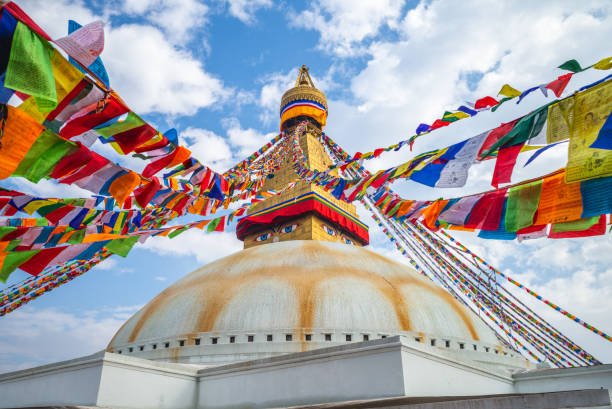Boudhanath stupa
Boudhanath Stupa (also spelled Boudha Stupa) is one of the largest and most significant Buddhist stupas in the world, located in Kathmandu, Nepal. It stands as a major pilgrimage site for Buddhists, especially Tibetan Buddhists, and is a UNESCO World Heritage Site.
Historical Background:
The stupa is believed to have been built in the 14th century, after the Mughal invasions. However, some legends and historical records suggest that its origins may date back even earlier. It was constructed in the shape of a mandala, representing the Buddhist cosmos.
Architecture:
Boudhanath Stupa is known for its massive mandala structure. It features:
A large white dome symbolizing the earth.
A gilded tower with the "eyes of the Buddha" on all four sides, symbolizing wisdom and compassion.
A spire topped with a canopy and a pinnacle representing enlightenment.
13 steps leading to the top, symbolizing the path to enlightenment.
Prayer flags flutter from the top, and the base is surrounded by 108 small niches with statues of Buddha and wheels of prayer.
Religious and Cultural Significance:
The stupa is a focal point of Tibetan culture in Nepal. Many Tibetan refugees settled in the area after the 1959 Chinese invasion of Tibet, bringing their traditions and monastic culture. Monks, locals, and tourists walk around the stupa in a clockwise direction, spinning prayer wheels and chanting mantras like "Om Mani Padme Hum."
Present Day:
Today, Boudhanath is not only a religious site but also a hub for Buddhist teachings, meditation, and cultural exchange. It is surrounded by monasteries, shops, cafes, and guesthouses that reflect Tibetan influence.
Boudhanath remains a symbol of peace, harmony, and spiritual awakening, attracting visitors from around the globe.
